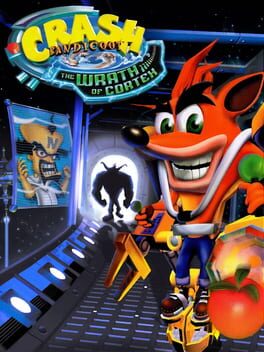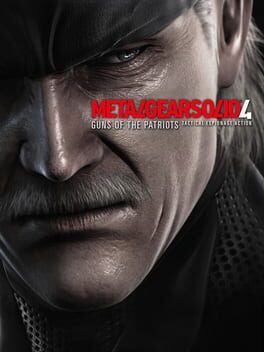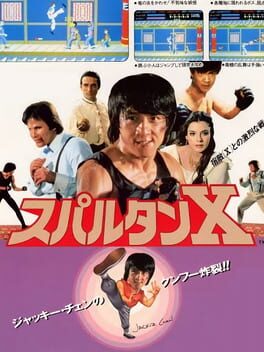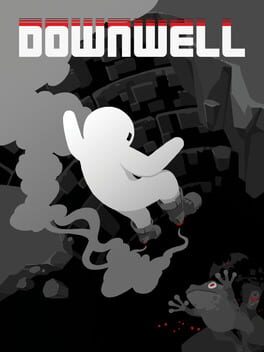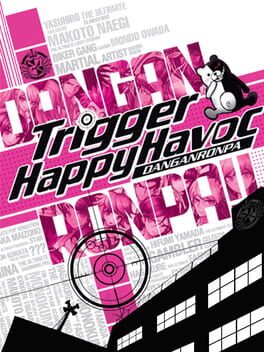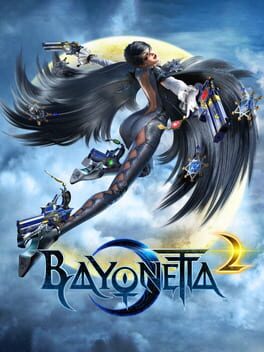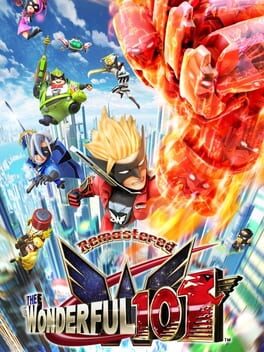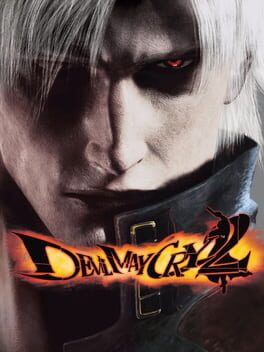LukeGirard
BACKER
nostalgia is a very powerful thing. on one hand, it can be used to further enhance our favorite games by associating fond memories to them during our formative years. maybe they were there for you during a hard period of your life or even helped form a powerful bond with another person. on the other hand, it can cloud your better judgement and warp your perception on things you may not enjoy otherwise. not that there's anything inherently wrong with that, but it is something to keep in mind when critiquing your favorite forms of art. before this month my only experience with crash bandicoot consisted of scattered sessions of the wrath of cortex as a child, and if you asked me how i felt about the game i would have nothing but positive to say about it. i recently decided i would marathon every major crash game in preparation for the newly released crash bandicoot 4: it's about time, and it was a rather enlightening experience. it wasn't without it's bumps in the road, but the highs of the ps1 trilogy were that of pure platforming bliss. my journey was not over however, one game remained. let's just say nostalgia could only assist me so much here. if i could be totally honest for a second, my experience with this game wasn't totally awful, in fact there were some genuinely great things in here. the level variety was top notch, and the music was spectacular all the way through (i might go as far as to say this game has the best soundtrack in the series up to this point) and some of the crash levels were genuinely great. but past that, there isn't much good to pull from this game. traveler's tales was allegedly put under intense crunch to complete this game and it's clear in the final product. major structural notes were clearly taken from crash bandicoot warped when assembling this game, but instead of refining the solo crash levels, they put an insane amount of time and energy into the gimmicky vehicle sections. i didn't outwardly dislike those sections in warped, probably due to their scarcity compared to standard levels, but in this game it feels so schizophrenic in its structure. all the time the game is throwing something new at the player and seeing if it sticks (whether that be a ball rolling level, a car level, a plane level, etc.) and this really creates two major issues. for one, it's likely none of these sections will have time to blossom into something worthwhile or stick to its players in any meaningful way. secondly, it runs the risk of taking space away from the standard crash levels. of course, the game ends up suffering from both of these. everything simply feels half baked in the wrath of cortex. from the visuals, to the gameplay, to the enemies, nothing feels quite right. the developers clearly loved a lot about warped, but they didn't have the time or resources to fix its flaws or learn from its mistakes. i couldn't think of a more flaccid way to end this era of crash. quite frankly i was on autopilot for most of this experience, and i can't see myself returning to it in the future.
2003
usually when it comes to stylish action games, the first thing you look for are crazy combos, long move lists, and insane movement to navigate the battlefield. viewtiful joe doesn't follow this traditional approach. as an example, a game like devil may cry uses 3 different subsequent commands are used to launch an enemy, and in viewtiful joe you only need 2. despite an overall simplified approach to combat however, the game is not lacking in depth. using the vfx gauge (your main resource in combat) you can slow down time, speed up joe, or zoom the camera in and show off some unique actions. all have their time and place, and for the most part don't feel underdeveloped. none of these actions are nearly as cool as the primary scoring tool however, in which you stun an enemy, slow down time, and use every enemy on screen as makeshift projectiles that multiply your score with each successive hit. on their own these mechanics already make viewtiful joe a refreshing action game, but the thing that really pulls the game together is the visual presentation. taking place in the world inside a theater screen, everything feels like it's being filmed on a movie set. the cardboard cutout backdrops, the film grain when draining your vfx, the camera shutter sound effect that plays when you land a hit, or even the edges of film that appear in cutscenes or during combat. nothing feels out of place. i've only mentioned a few examples, but there's so many little touches that really bring the whole piece together that i’d be here all day if i mentioned them all. i think if anything could have been touched up, it would be the bosses. none of them are outright bad (beating a boss is usually one of the most satisfying feelings in the game) but they usually end up falling apart from one dominant strategy and never really get the chance to shine. this is especially unfortunate as a boss rush near the end of the game is concluded by arguably the best fight in the game, but we didn't see the game go beyond that (i think the final boss was great in it's own right, but not without its own issues). for all i know, these issues could be resolved in the sequel, it's a game i know so little about but I'm incredibly interested to see what it has in store. i would highly recommend any action fans check this game out, it's sharp, it’s witty, and it's not an experience you can really find anywhere else.
2015
1986
how did kids beat this back in 1986? no amount of nintendo power is gonna help you here. outside of a rather high difficulty spike in the last third or so, castlevania stands tall in an era riddled with games that were simply hard for the sake of it. outside of it's impressive atmosphere and excellent soundtrack (both nothing new from konami) the thing that really sets castlevania apart from the crowd is it's commitment to it's core design elements. it would be easy to look at your restrictive movement and sluggish whip and call the game sloppy on the face of it, but for the most part everything is built well around this core set of mechanics. enemies are placed in fair locations, checkpoints are well placed, bosses have limited movesets, and in general it's all balanced around the weight of simon. i suppose an argument could be made that more control is always a good thing, but given the popularity of such restrictive titles as dark souls and other games like it, i don't believe it's always a necessary aspect to a good game. the worst of it is easily getting knocked into an instant death pit or being stuck on a staircase. stairs in particular present the most persistent challenge in the whole game, funny enough. all in all, i was rather impressed with this game despite some rough spots. i can't wait to see what the series will eventually blossom into from here.
1984
compared to games of modern day, kung-fu doesn't exactly hold up on the surface. it can be beaten in about 5 minutes, there's next to no mechanical depth, and it's low difficulty is extreme to a fault. even looking at other games of it's era like super mario bros. and donkey kong, there's a clear disparity between these titles. however, i feel as though kung-fu captures the humble nature of it's time better than anything i've played up to this point. another member on backloggd named Uni (someone i'd highly recommend you follow) put it best in that "it offers toy-like fun" and i feel as though that's the perfect summation of this game. it gets in, provides quick fun, and gets out. i think many bloated triple-a games of today could learn a thing or two from kung-fu.
1991
i'll admit, the prospect of a castlevania game with more control options was always one that allured me. now that i have some experience with the series however, i can't say i'm particularly fond of the changes made in super castlevania 4. the identity of the first game was founded on it's difficulty, and by extension it's lack of control. it's not fair to say the game doesn't control well though. every action performed in the first game had to be calculated in advance, and the game is clearly structured around this. however, when the series moved to the snes and more power was given to the player, i'd argue it lost a lot of its identity. simon can now whip in many different directions, control the arc of his jump, and generally speaking just feels snappier to move around with. on paper these all sound like positives, but unfortunately konami didn't accommodate for this in the rest of the game. sub weapons in particular feel the effects of this change. what used to be a system designed to cover the blind spots of the whip, now has very little reason to exist. any positional challenge can be overcome by the whip and jump control. i hesitate to blame this on the nature of this being a remake/retelling of the first game because there are clearly small moments that utilize this newfound control (the crouch walk sees interesting moments later on) but they clearly didn't want to reinvent the wheel with the series quite yet. to make matters worse, instant death traps such as bottomless pits and spikes are placed all throughout, possibly as a way to counteract the ease of control. this makes deaths feel more frustrating than before, as the few times the player is punished, they're punished to an absurd degree. the soundtrack is surprisingly weak too. not that the compositions are bad, not by any stretch. it just lacks the punch i normally expect from the super nintendo sound chip. i won't make the claim that this is a bad game, but something was certainly lost in translation from the 8-bit classic that preceded it.
2012
reviewing any piece of art often requires some amount of subjectivity from the writer. our interactions with art are often influenced by our personal experiences in life, and especially in a medium as variable as video games, many people will walk out of a game with something different to say. as an example, someone with an appreciation for deep character studies may find the plot in the last of us to be it's most engaging element, while someone who enjoys stealth games may like the combat more than anything else. i don't believe there's anything inherently wrong with this approach to criticism, it's just how we're wired as human beings. as we consume media we pull from our past experiences and our immediate impressions come naturally. so when a game like journey comes along with such a singular focus, it's no surprise that people feel strongly one way or another when talking about it. as the name suggests, it's more about the journey than the destination. in fact, that's really all there is to it. there's no immediate conflict, there's nothing to move a plot along, and there's barely anything resembling a story. there's subtle bits of world building sprinkled throughout, but nothing to pull you away from your objective. the game has often been heralded as a flawless work of game design mastery, while also frequently being described as boring or just another walking simulator. after hearing the discourse take fold for years, i knew i had to try it out for myself. having finally played it in one straight shot and feeling a wide range of emotions while i played, i can comfortably say i'm at least happy i played it. while it wasn't quite the thought provoking game i led myself to believe, i don't think it necessarily needed to be. the level of comfort i felt on the way to the end trounced any other questionable feelings i may have felt from the offset. i don't believe i have the authoritative right to call journey a perfect video game, but i can say with confidence that it's a game that everyone should play.
2015
downwell is the best mobile game that should probably never be played on a mobile device. while the pick up and play nature of the game suits the mobile format quite nicely, the necessity for massive digital buttons on-screen could easily be a hinderance to play. the last thing you'd want would be for a run to fail due to not seeing what's down below or fumbling with the controls. that's not to say the game requires high dexterity, it only has 3 inputs after all, but in my experience it's better to use any controller you can get your hands on. in some ways, downwell feels even closer to an arcade game than a mobile game. the vertical screen space reminds me of overhead shoot-em-ups and in general the pace of the game is comparable to old arcade games that held about 30 minutes of content. for how tightly designed the game is, it's a marvel that the game is only $1, even on pc. while it may not be the most content rich game in the world, it's commendable for making the most out of the platform it's built for and managing to avoid any preconceived notions around the soulless void of the mobile market.
This review contains spoilers
instilling hope in the students with the final truth bullet was kino, it's just a shame that up to that point, i didn't care for most of the characters. that's probably my biggest issue with the game, it's hard to stay interested in what happens to these characters when most of them are unlikable. maybe that's more a personal issue, but it stuck out nonetheless. it also felt like a lot of time was wasted in and out of trials, information would be withheld or characters would dance around the solution to a problem when the answer is right in front of their faces. the thing that holds this game together is the aesthetic and feel of it all. it's undeniable that regardless of what goes on in the world of these games, it's interesting to take part in it all. despite my problems with this first game, i'm glad i went out of my comfort zone and tried something i may not have pursued otherwise. i'm interested to see how the future games turn out as they seem way more appealing to me.
hina is best girl by the way
hina is best girl by the way
2014
Bayonetta 2 leaps off the screen in an explosive display of pride for the action genre. The colors pop and the visual design is off the charts. No longer does the game force cheap instant death QTEs on the player, but instead the occasional laid back mashing sequence that provides no immediate danger to the player, providing a power fantasy that isn’t anything new to the genre. On the whole the game is snapper, more vibrant, and is in contention for the best audio visual experience Platinum games has ever made. On the surface this game is a straight upgrade from Bayonetta 1, but that’s just the problem, it’s all just surface level. The more I played the game the more little things jumped out to me. The heavier enemies mean juggle combos aren’t as easy to attain, and occasionally your combo will be broken out of due to no fault of your own. To get around this the player has a new mechanic known as Umbran Climax, but to say it turns the game into a button masher would be an understatement. A thing I loved about the first game was how it was all balanced. One might assume that witch time was the defining central mechanic to skillful play, but in a shocking twist, the game removes this mechanic entirely on the highest difficulty, revealing that it was never essential to begin with. This was teased at certain points by enemies that couldn’t trigger witch time like gracious and glorious, but this revelatory moment is something that surely made people stick with the game even past the highest threshold of difficulty. In general, Platinum Games are really good about introducing a unique mechanic to the player, and then removing the training wheels by the end of the experience. They respect the player’s skill and let them go wild with newfound mastery of the game. But in Bayonetta 2, the use of Umbran Climax is essential for the sake of getting the best rank. More pressingly, this addition seeps into other facets of the game in a negative way. Most obvious is the major nerf to Bayonetta’s damage output. Possibly in an attempt to make Umbran Climax more enticing, Platinum opted to reduce the damage output of standard attacks dramatically from their power in the first game. This isn’t a terrible change on paper, but Bayo is so crippled here that fights end up dragging on for what feels like an eternity. In general there’s just not enough wiggle room for player expression in the game to warrant a 2nd playthrough. I’ve seen many players call Bayonetta 2 a better casual experience than the first game and I definitely agree. It's easier, less punishing, more flashy, and makes the player feel like a god from the start compared to the brutal challenge of Bayonetta 1. As a result, however, it loses all the thrill, tension, and escalation of the first game. I’m not sure what's in store for our favorite angel slayer, but with the impending release of Bayonetta 3 looming over our heads, one can only hope they don’t make the same mistakes they did with this game.
You know, I can almost envision a reality where this game received the notoriety it so clearly deserved, and it wouldn't take much strain to imagine. Given the time period in which the game launched, it had everything it needed to click with anyone who laid eyes on it: a bright and colorful cast of characters that felt ripped right out of the system they were made for, a story of super heroes fighting off an alien invasion during an era where The Avengers were exploding in popularity, quirky gameplay mechanics you'd come to expect from a company like Platinum Games, an all star team of action game designers who had the experience and passion needed to bring this crazy concept to life and flourish, the works. With Hideki Kamiya at the helm, there was no chance this game could possibly fail, regardless of the system it was launching on.
So what went wrong?
Clearly something didn’t click with people despite Platinum’s best efforts. There are many reasons this could be the case (unorthodox control scheme, confused marketing, niche appeal of the action genre, etc.) but it would be difficult to pin down one specific thing that turned people away.
In my eyes however, what matters most is not that the game lacked something to wrangle in the highest number of potential customers, but that the game did not restrain itself in what it sought out to do.
Let me set the scene for you: June 2020, one of the worst years in recent history and it refuses to let up. Due to the recent shutdown of my job given the status of the world at that time, I had devoted a lot of my free time to playing games, as many others in my position likely do as well. Everything in my life is starting to drag, and I can tell nothing will get better any time soon. However, there is a momentary glimmer of joy coming my way. The Wonderful 101 recently had an incredibly successful kickstarter, and having heard many positive things about the game, I decided to give it a blind shot. Many of my favorite games were action games, so while Platinum didn’t have a perfect track record in my experience, I was interested in trying something I knew so little about. Even if it was disappointing, it probably had some interesting elements to dig into.
I didn’t expect my expectations to be shattered like they were after finishing the game.
I’ve never played a game before that appealed to all my sensibilities like The Wonderful 101 does, and even after nearly 200 hours of play, I’m still picking up on new things to love that I never noticed before. I won’t bore you with the semantics, but every element of the game is emblematic of everything I love about the medium. The story felt cartoonish and stupid in all the best ways, the gameplay presented incredibly distinct systems to set it apart from other action games while tackling problems about the genre in interesting ways I had never considered before, and the whole experience was uncompromising in it’s vision in a truly inspiring way.
In many ways, The Wonderful 101 made me feel like a kid again and ignited a passion for life in my heart at a point where everything felt so aimless and dark. As this global pandemic slows down and eventually fades into nothingness, I’ll be sure to leave a lot of things from this era in the past, but this game is sure to stick with me for years to come.
Regardless of how you may feel about the final product, what can’t be denied is that The Wonderful 101 is everything it wanted to be and didn’t settle for less. And for the time period when it came into my life, that’s all I needed it to be.
So what went wrong?
Clearly something didn’t click with people despite Platinum’s best efforts. There are many reasons this could be the case (unorthodox control scheme, confused marketing, niche appeal of the action genre, etc.) but it would be difficult to pin down one specific thing that turned people away.
In my eyes however, what matters most is not that the game lacked something to wrangle in the highest number of potential customers, but that the game did not restrain itself in what it sought out to do.
Let me set the scene for you: June 2020, one of the worst years in recent history and it refuses to let up. Due to the recent shutdown of my job given the status of the world at that time, I had devoted a lot of my free time to playing games, as many others in my position likely do as well. Everything in my life is starting to drag, and I can tell nothing will get better any time soon. However, there is a momentary glimmer of joy coming my way. The Wonderful 101 recently had an incredibly successful kickstarter, and having heard many positive things about the game, I decided to give it a blind shot. Many of my favorite games were action games, so while Platinum didn’t have a perfect track record in my experience, I was interested in trying something I knew so little about. Even if it was disappointing, it probably had some interesting elements to dig into.
I didn’t expect my expectations to be shattered like they were after finishing the game.
I’ve never played a game before that appealed to all my sensibilities like The Wonderful 101 does, and even after nearly 200 hours of play, I’m still picking up on new things to love that I never noticed before. I won’t bore you with the semantics, but every element of the game is emblematic of everything I love about the medium. The story felt cartoonish and stupid in all the best ways, the gameplay presented incredibly distinct systems to set it apart from other action games while tackling problems about the genre in interesting ways I had never considered before, and the whole experience was uncompromising in it’s vision in a truly inspiring way.
In many ways, The Wonderful 101 made me feel like a kid again and ignited a passion for life in my heart at a point where everything felt so aimless and dark. As this global pandemic slows down and eventually fades into nothingness, I’ll be sure to leave a lot of things from this era in the past, but this game is sure to stick with me for years to come.
Regardless of how you may feel about the final product, what can’t be denied is that The Wonderful 101 is everything it wanted to be and didn’t settle for less. And for the time period when it came into my life, that’s all I needed it to be.
2007
Super Mario Galaxy was always one of my favorite games growing up, but over the years I've drifted apart from that notion for reasons outside my understanding. Any time I would attempt to revisit the game, it never quite stuck the landing like it did during my magical first playthrough. Recently however, I think I realized what made this game stick out at the time, while falling short under my current standards for 3D Mario games.
It's honestly really simple, the game loves to show you impressive things, while never letting the player do anything interesting on their own.
Now I understand to a point why this may not bother a lot of people. Nintendo themselves have described 3D Mario games as falling under two categories: linear course clear games like Galaxy and 3D World, and sandbox games like 64 and Sunshine. The former dropping the player into one-off level concepts that railroad the player, with the latter letting the player find the fun for themselves within smaller playground-like levels. While these are both going for vastly different approaches in design, it's hard for me to look at them in a vacuum when one thing ties all of his games together regardless of dimension, and that's the joy of moving Mario around an environment.
Simply put, Super Mario Galaxy just does not control as well as other 3D Mario games, or many other 3D platformers for that matter. When talking about what Galaxy does well, people often lean on the level design, which is true to a point. While these levels take the planetoid concept and do really interesting things with them, the player doesn't have many options to make their own fun while completing these samey linear objectives. At least in a game with movement as simple as 3D World, the developers crafted an identity for every single stage, while Galaxy tends to send you down paths that only slightly differ in structure.
Now, an argument can be made that the levels are built around what Mario is capable of so it's foolish to complain about the controls, but to me, the levels can only be so fun when the playable character feels so sluggish. After all, a game is only as interesting as the characters that inhabit it, regardless of the genre. Even a game with levels as barren as Devil May Cry 4 houses some of the most interesting combat in the entire action genre. Developers should ideally strive to find a good middle ground between interesting movement and interesting level design, but I'll always personally prefer games that allow the player to make many interesting choices during gameplay.
I do not hate Super Mario Galaxy, the universe exploring concept still holds so much potential Nintendo has yet to tap into, but if they were to make a Galaxy 3, it may be in their best interest to rethink some of the fundamental design choices they made during the first two games. For now though, I'll just stick to 64 and Sunshine.
It's honestly really simple, the game loves to show you impressive things, while never letting the player do anything interesting on their own.
Now I understand to a point why this may not bother a lot of people. Nintendo themselves have described 3D Mario games as falling under two categories: linear course clear games like Galaxy and 3D World, and sandbox games like 64 and Sunshine. The former dropping the player into one-off level concepts that railroad the player, with the latter letting the player find the fun for themselves within smaller playground-like levels. While these are both going for vastly different approaches in design, it's hard for me to look at them in a vacuum when one thing ties all of his games together regardless of dimension, and that's the joy of moving Mario around an environment.
Simply put, Super Mario Galaxy just does not control as well as other 3D Mario games, or many other 3D platformers for that matter. When talking about what Galaxy does well, people often lean on the level design, which is true to a point. While these levels take the planetoid concept and do really interesting things with them, the player doesn't have many options to make their own fun while completing these samey linear objectives. At least in a game with movement as simple as 3D World, the developers crafted an identity for every single stage, while Galaxy tends to send you down paths that only slightly differ in structure.
Now, an argument can be made that the levels are built around what Mario is capable of so it's foolish to complain about the controls, but to me, the levels can only be so fun when the playable character feels so sluggish. After all, a game is only as interesting as the characters that inhabit it, regardless of the genre. Even a game with levels as barren as Devil May Cry 4 houses some of the most interesting combat in the entire action genre. Developers should ideally strive to find a good middle ground between interesting movement and interesting level design, but I'll always personally prefer games that allow the player to make many interesting choices during gameplay.
I do not hate Super Mario Galaxy, the universe exploring concept still holds so much potential Nintendo has yet to tap into, but if they were to make a Galaxy 3, it may be in their best interest to rethink some of the fundamental design choices they made during the first two games. For now though, I'll just stick to 64 and Sunshine.
2003
